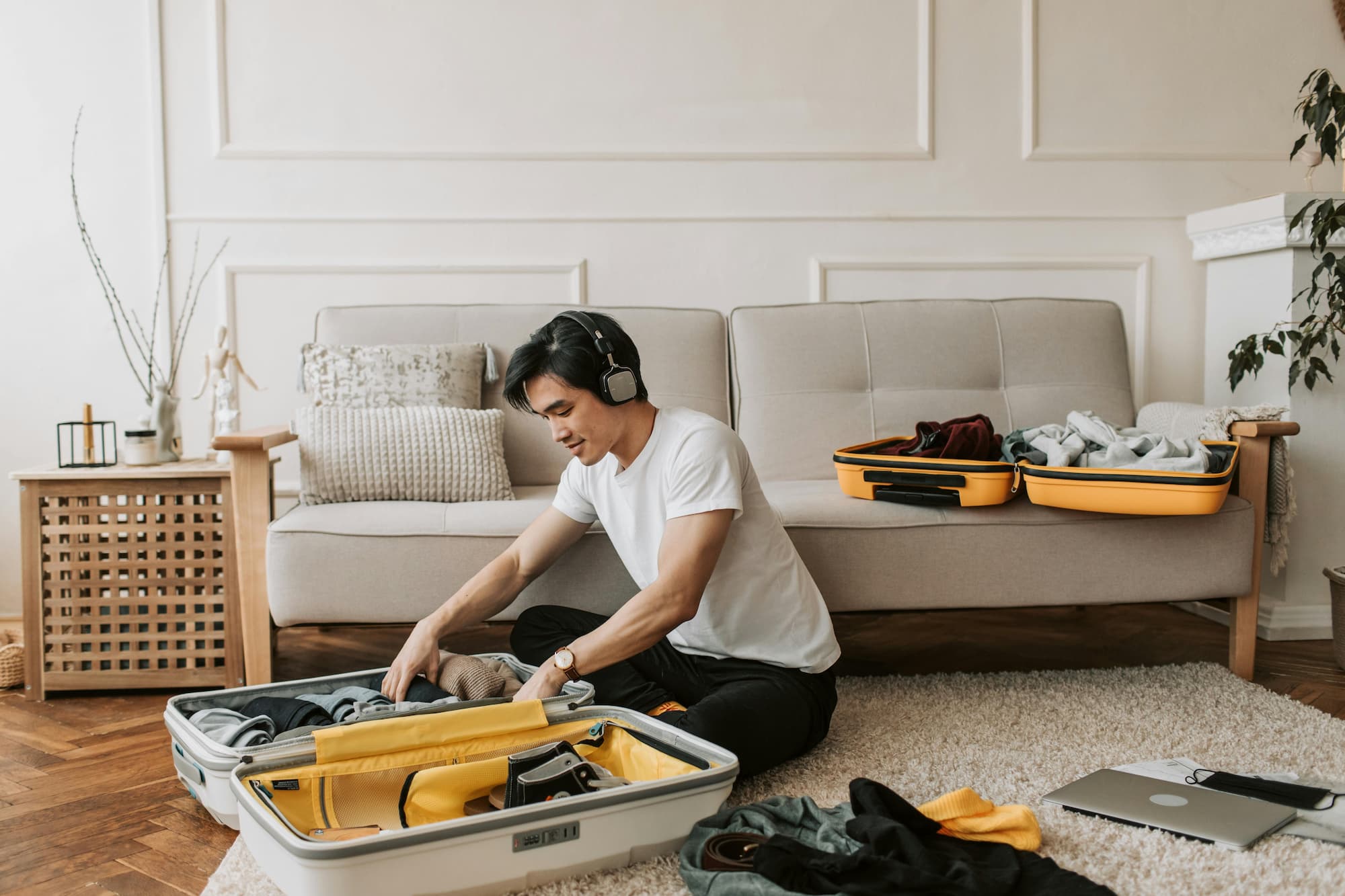The way you pack can make or break your trip — and one packing hack that can save you from packing stress is rolling your clothes. It’s a simple, no-fuss method that opens up more space in your suitcase, keeps wrinkles at bay, and helps you keep your suitcase neat and tidy. Now, let’s dive into how you can roll clothes for packing,
Why roll your clothes when packing a suitcase?

Rolling clothes isn’t just a random trend that gained popularity because it looks neat on travel TikToks and YouTube videos. It has real, practical benefits, such as:
- Space-saving: Rolled clothes take up less space compared to when they’re folded. This means you can fit more into your luggage without having to wrestle with the zipper.
- Wrinkle reduction: When clothes are rolled properly, they’re less prone to creases. While it’s not a foolproof way to prevent wrinkles entirely, it can help reduce them significantly.
- Organization: Rolling allows you to see each item at a glance. Unlike stacks of folded clothes that can shift and require rummaging, rolled items stay put and are easier to sort through.
How to roll clothes for more space in your luggage (and less wrinkles)

Getting the rolling technique right is essential. Here’s a step-by-step guide for different types of clothing:
1. T-shirts and casual tops
- Step 1: Lay the shirt flat on a clean surface and smooth out any wrinkles.
- Step 2: Fold the shirt in half lengthwise so that the sleeves align. For short-sleeve shirts, fold the sleeves inward to create a rectangular shape.
- Step 3: Starting at the bottom hem, roll the shirt tightly until you reach the neckline.
2. Pants and jeans
- Step 1: Lay the pants flat and fold them in half so one leg rests on top of the other.
- Step 2: Smooth out any creases with your hands.
- Step 3: Begin rolling from the waistband down to the cuffs.
3. Bulky items (sweaters and hoodies)
- Step 1: Lay the item flat and fold the sleeves in so they cross the body.
- Step 2: Fold the item in half or thirds, depending on its length.
- Step 3: Roll from the bottom up. If the fabric is thick, roll it loosely to avoid compressing the material too much.
Extra tips to help you roll clothes like a pro

- Use packing cubes: These are game-changers for keeping rolled items compact and organized. Packing cubes can help compress rolled clothes even more and separate different types of clothing.
- Strategic rolling: Place heavier, rolled items at the bottom of your suitcase and lighter items on top to maintain balance and prevent shifting.
- Layer with tissue paper: For ultra-delicate fabrics, layering a piece of tissue paper before rolling can help minimize wrinkles and friction.
Bonus packing tips
Rolling your clothes is a great start, but pairing it with these packing strategies can help save even more space in your suitcase:
- Layer socks and small items inside shoes: Use every inch of space by placing rolled socks, belts, or smaller items inside shoes.
- Bundle method: For longer trips, consider combining rolling with the bundle method. Start by rolling smaller items and wrapping larger garments around them to create a tight bundle.
- Compression bags: For bulky items, consider using compression bags. These bags can be vacuum-sealed or manually compressed to squeeze out excess air, creating more space in your luggage without damaging your clothes.
Is rolling clothes when packing always the best option?

- Formal wear: Suits, blazers, and dress shirts may hold their shape better when folded or kept in a garment bag.
- Delicate fabrics: Silk and certain synthetic materials can be more prone to creases and might need special handling or even hand-carrying.
FAQs

Does rolling clothes actually save more space than folding?
Yes, rolling clothes can save more space compared to traditional folding. The rolled method allows you to fit more items into your suitcase because the clothes lie flatter and compactly.
Do rolled clothes really get fewer wrinkles?
While rolling clothes does not completely prevent wrinkles, it significantly reduces them compared to traditional folding. Smoother items like cotton shirts and jeans tend to stay wrinkle-free, while delicate fabrics may still need touch-ups.
Can I roll all types of clothing?
Most clothing items can be rolled, including t-shirts, jeans, and light sweaters. However, items like formal suits and fabrics prone to wrinkles, such as silk, are better kept folded or in garment bags.
Is rolling or folding better for long trips?
Rolling is often better for long trips where you need to maximize space in your suitcase and keep items organized. However, a mix of rolling and folding might be ideal if you have a variety of clothing types.




